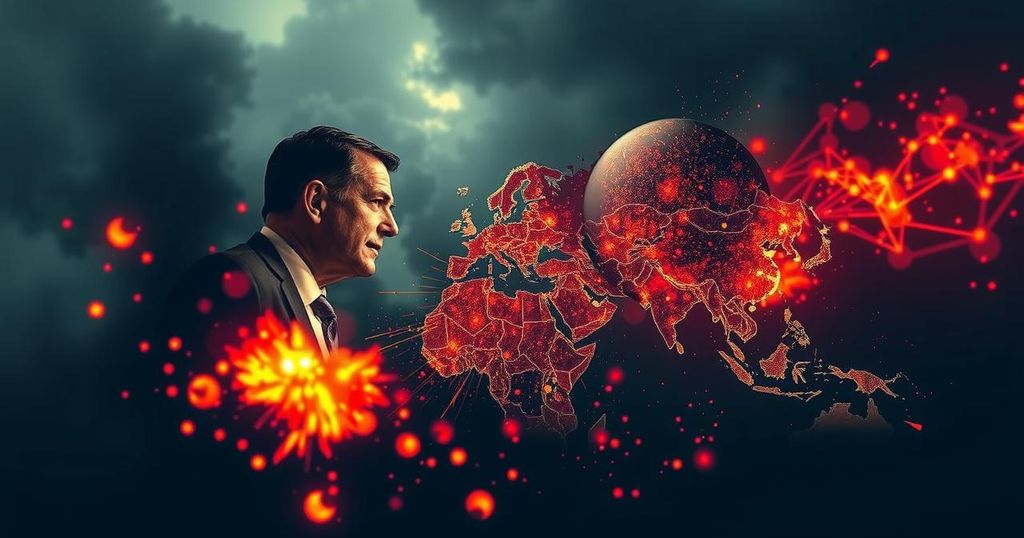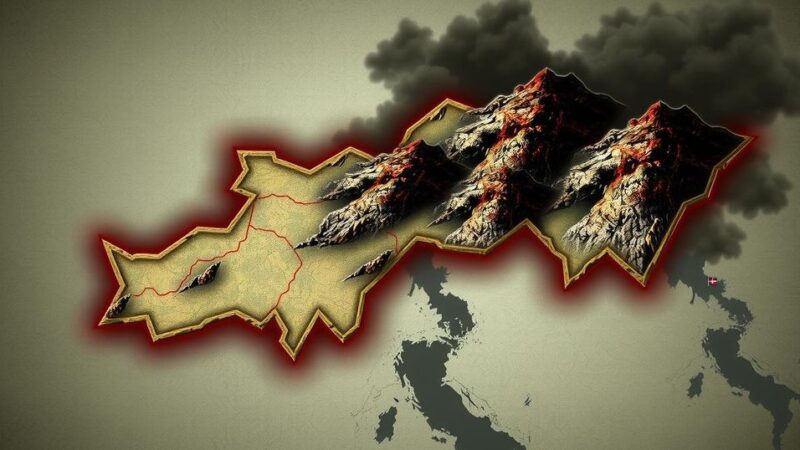The Middle East is currently experiencing interconnected conflicts as Israel prepares to retaliate against Iran for a missile attack, while violence in Gaza persists following the death of Yahya Sinwar, and Lebanon faces escalating military tensions. This tumultuous environment raises significant concerns regarding future peace efforts and regional stability.
The geopolitical landscape of the Middle East is currently fraught with simultaneous conflicts that, while interconnected, exhibit a degree of independence that renders their resolution particularly complex. In light of recent hostilities, Israel is poised to initiate an aerial attack on Iran, a measure anticipated as a response to Iran’s missile barrage on October 1st. Concurrently, the situation in Gaza remains volatile, exacerbated by the assassination of Yahya Sinwar, who played a pivotal role in orchestrating the Hamas attacks on October 7th. Meanwhile, the conflict in Lebanon persists, with concerns expressed by an American envoy on October 21st, characterizing the situation as having “escalated out of control.” These conflicts not only provoke international attention but also raise urgent questions regarding the potential for ceasefires and the future political dynamics within the region, fueled by a resurgence of historical concepts that may threaten broader stability.
The Middle East is currently engulfed in a series of escalating conflicts that reflect longstanding political tensions, territorial disputes, and international strategic interests. Israeli attacks on Iranian targets are anticipated in retaliation for perceived aggressive actions, including missile launches. The ongoing violence in Gaza, particularly in the wake of significant leadership losses within Hamas, indicates a turbulent attempt to manage internal and external pressures. Additionally, the crisis in Lebanon serves as a reminder of the region’s fragile state, with local institutions facing significant challenges amidst a backdrop of military engagements and shifting alliances. Understanding these dynamics is crucial for comprehending the interconnected nature of contemporary conflicts in the area.
In conclusion, the intersection of America’s political climate with the ongoing turmoil in the Middle East highlights a precarious situation. Israel’s impending military actions against Iran, continued hostilities in Gaza, and escalating conflict in Lebanon signal a critical juncture that may redefine the geopolitical landscape. The recent turn of events underscores the necessity for engaged diplomacy and a reevaluation of strategies to promote stability and peace in a historically volatile region.
Original Source: www.economist.com






